The benefits of clay
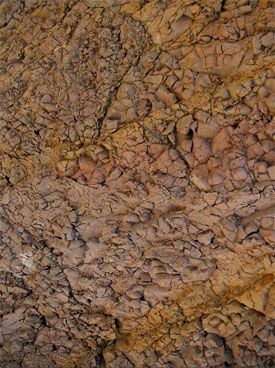
Clay, particle or mineral ?
If we know that clay is extracted from quarries and dried in the sun, you knew that the clay name differs depending on the areas of study. clay can therefore designate either a particle of a size less than 4 μm, or the family of phyllosilicates (silicates in leaflets).
When a sedimentary rock is composed of a majority of clay minerals (generally aluminum silicates) this rock will bear the name of argilite.
Use of clay
Whether cooked or not, clay is one of the oldest materials used by man. Mixed with water, the clay gives a paste that can be easily molded or shaped. this property is at the origin of its use to make tiles, bricks, pottery, tablets, cement and everyday objects. but clay is also an ancestral remedy known by the Egyptians or Greeks of Antiquity who frequently used it to heal.
Clay compositions
The clay is essentially made up of hydrated aluminate silicates, in which mineral elements such as alumina oxides, titanium, calcium, magnesium, potassium and sodium are nestled.
These are the ferric oxides present in the clays that will give it its color.
So we will find in the nature of clays of different colors like white, green, blue, yellow, red.
1- clays rich in alumina
We find in this family the three most used clays .
a - kaolinite, of white colour, has antibacterial, anti-inflammatory and healing virtues. it is a very versatile clay that can also be used, thanks to its large covering power, as a mask or cataplasm. The name “kaolin” comes from the name of the first known deposit in China, located in Kao-Ling. The kaolinite clay is among the softest for the skin. In france, it is found in bretagne and near limoges.
b - the Montmorillonite, of grey or green colour, is the most widely used either by oral or external channels. this clay is of great purity. It is mainly found in the Languedoc, in Provence and in the central massif.
c - Illite is of a quality less than the Montmorillonite. It is mainly used in thick cataplasms. The Illite green clay is found mainly in the central massif and in the Parisian basin.
2 - the iron-rich clay: glauconite and nontronite, mainly used in the oil industry. In these clays, the red clay can be found, mainly used in cosmetics for "re-mineralized" dull, tired and irritated skins.
3 - clays rich in magnesium: antigorite, saponite, talc, attapulgite. we can find green, red or white .
In nature, depending on the regions of the globe, there are still other clays with different shades of color. but the color of the clay is not the most important element. First of all, its properties must be adapted to the use that one wishes to make.
The different forms of clay
Less to use it to make pottery, you will find the clay in the trade in the form of powder, paste, pieces and capsules.
1 - the powder
In this form we will find three appellations:
a - ultra-ventilated clay: It is the finest clay, so it is mainly used internally.
b - ventilated or surfing clay: a little less thin than ultra-ventilated. used mainly for body and beauty hygiene (shampoing, mask, ..)
c - fine clay: strangely, it is the least "fine" of the three. It is used especially for making compresses or cataplasms.
2 - paste
It is a slightly humidified clay ready for use. this type of clay can troubleshoot since it is simple and convenient to use. On the other hand, being ready for employment, she finds herself more expensive.
3 - the pieces
Clay blocks are only crushed. So there are irregular pieces of 2 cm. this form of clay, less expensive than powder, is mainly used in the making of cataplasms that requires more material.
4 - tablets or capsules
More comfortable to swallow for those that clay water fades a bit.
The powers of clay
According to the many literature on the subject, the clay would have the property to direct its action where the body needs it most. in the main "powers" of the clay, one can cite:
1 - Absorption, adsorption and fixation power
L’absorption or "buvard effect" is the ability to retain water, fat, gas. The clay, which is capable of absorbing up to eight times its weight, makes it an ideal ingredient in the care of hair or skin or it will absorb without agressing, excess sebum and impurities.
Clay also has the property ofadsorption, that is to say that she has the ability to attract toxins and impurities, then to fix them. this property is interesting in internal use but also in external use in the use of masks or compresses.
2 - fortifying power
The clay contains many minerals and mainly silica with about half the total weight. It also contains calcium, iron and magnesium. This set of minerals gives the clay its strong, healing and regenerating power of the tissues.
3 - antimicrobial and antiseptic power
These properties actually exist only in pure clay and excellent quality.
Although for the time being neither the medical body nor the scientists are able to accurately explain this phenomenon, clay seems to act as a bactericidal while promoting cell reconstruction.
4 - softening power
White clay, which is less active than others, is often used for its softening property to soothe, for example, the epidermis, in case of warming after hair removal or irritation due to the friction of clothing.
5 - soothing and relaxing powers
To relieve pain, the green clay can be used in warm or cold cataplasm from 1 to 2 cm thick, leaving a minimum of 20 minutes on the painful part. to strengthen the action of the clay, one can combine a few drops of essential oils of Gaulthérie, , eucalyptus citriodora or Peppermint.
If you would like more information about the therapeutic use of clay, internally or externally, we recommend reading this document particularly interesting.
The colors of the clay
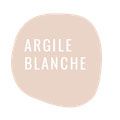
1 - white clay: purifies and cleanses gently
White or kaolin clay, is soft and re-mineralizing, so it is particularly well suited to the care of dry, sensitive and fragile skins. It will also have healing and anti-inflammatory virtues and will be perfect for treating irritations and small injuries. has used in cataplasm or mask for the face and neck. on fragile skin one can add to the preparation, just before use, a few drops of argan vegetable oil as well as a drop of essential geranium oil. It can also be used in hair masks to revitalize the hair brittle and devitalized or as dry shampoo. as with all clays it can be added to the bath water to soften the epidermis. not allergic, it also fits the sensitive skin of babies and can be used as talc.
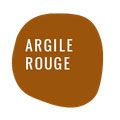
2- the red clay: Ready for employment, it's more practical
Red clay is rich in trace elements and iron oxide, which gives it this red color.
From its composition it participates in improving blood circulation, illuminating your skin and
give a shine to the face. It is ideal against cutosed skins and subject to redness. sticky, it will promote the removal of impurities and clean pores. a facial beauty mask can be prepared by replacing water with a floral rose water for example. to soothe an irritated skin like a clay bath. for this it is enough to pour about 200 g of powdered red clay in a hot bath .
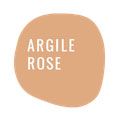
3- the pink clay: True color revealer
The pink clay has both the virtues of white clay and red clay.
Rich in trace elements, the pink clay is cleansing, revitalizing and non-irritating. It will therefore be especially recommended for hypersensitive, reactive, tired, dull, fragile skins as well as the most delicate skins that seek a soft face care. has therefore used as a "exfoliant" mask for skin cleansing, removal of impurities and excess sebum, as a "cut of brilliance" mask for dull and tired skins or as a soothing mask for fragile, reactive skin, prone to redness.
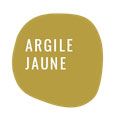
4- yellow clay: Rich in trace elements
Yellow clay is recommended to normal skins and very sensitive fatty skins because less rich in iron oxide than green clay, therefore less irritating. It is rich in minerals, stimulating, and reoxygenating cells and toning.
The yellow and regenerating clay contains mainly manganese. It stimulates the production of collagen and iron, allowing better cell oxygenation. It is also a very good natural anti-ride and an excellent hair revitalising for weakened hair. its exfoliating properties will be ideal for cleaning the skin, removing impurities and excess sebum. It is also used in hair mask on normal and fragile hair. It is also recommended to alleviate pain.
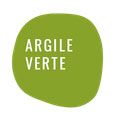
5- the green clay: for all skin types
The green clay is the most known and used of all clays both internally and externally. besides its versatility, this is the one you need to buy first. We saw above that we could find two green clays the illite (north of the france) and the Montmorillonnite (south of the france). their compositions are a little different:
The illiterate clay: The illite clay is weakly dotted with alumine (9.)% contains calcareous salts (14.)% is rich in iron (nearly 9).% by its strong absorption power, it will instead be recommended for cataplasms on the skin.
The Montmorillonite clay: The Montmorillonite clay contains a high silica concentration (54.6%), it can also be used in cataplasms but this type of green clay being very re-mineralizing and detoxifying is rather recommended for in-house treatments.
The green clay is a clay known to regulate excess sebum, whether for hair or skin and for its healing virtues, . It will therefore be particularly beneficial for problems of fat or mixed skin, but also for scars, eczema, acne, burns, dermites, mycoses...For hair with a tendency fat one can prepare a dough with 2 tablespoons of clay + 1/2 juice of lemon + 1 egg yellow. Leave to act about 20 minutes before rinsing. Using a beauty mask on the face will help you regain the shine of your skin by participating in absorbing excess sebum and actively fighting against acne and black stitches.
Has each his clay mask
Intended to enhance beauty, color clays Argiletz that we sell on the shop offer an amazing softness to thoroughly clean all skins, whatever their nature. green, red, pink, yellow, or white, let yourself be seduced.
Green clay - oily skins
Naturally rich in minerals, green clay is wonderful on each type of skin, and especially on fatty skins. used regularly, it has a great rebalancing effect, absorbs excess sebum, gently cleanses, stimulates naturally and gives the face a new complexion.
Red clay - dry skin.
Natural source of minerals, the red clay contains in it natural resources to make the skin very soft and reveal all the brilliance. His secret? Its richness of ferric oxides that illuminate the skin and illuminate it with a deliciously velvety natural shawl.
Pink clay - sensitive and reactive skins.
This subtle mix of two ultra soft clays takes care of the most delicate skins with infinite softness. Both emollient and neutral, the pink clay respects the ph of the epidermis, delicately refines the grain of the skin to bring it a rare softness and reveals its natural brilliance.
Yellow clay - mixed skin.
With a mineral composition very close to the green clay, the yellow clay has all the best virtues to exfoliate, purify all the epidermis and offer mixed skins as soft as a caress.
White clay - dull and sensitive skins.
Completely neutral, the white clay respects all skin types, even the most mature by bringing them a beautiful softness respectful of the epidermis. and thanks to its incredible mine and decongestant anti-crisis power, it instantly reveals the shine of the skin while rescinding it in depth.
Clay in beauty masks
A mask consists of a mixture of powdered clay and a liquid (mineral water or even better floral water). to strengthen the action of clay, you can add honey, essential or vegetable oils, lemon, ...
Create your own mask adapted to your skin:
1 - Purifying mask for oily skins: green clay + haemalis hydrolat + essential oil of lemon,
2 - oily and porous skin mask: the combination of honey and green clay is also a recipe to create a mask for this type of skin,
3 - moisturizing mask for dry skin: white clay + pink damas hydrolat + argan vegetable oil
4 - soothing mask for sensitive skins: pink clay + blue hydrolat + vegetable oil drunk
5 - anti-ageing regenerating mask: white clay + hydrolat orange blossom + vegetable oil pink musk.
6 - anti-aging mask: white clay + soft almond vegetable oil + carrot juice
7 - skin mask: red clay + lime hydrolat
8 - anti-red mask: white clay + honey + chamomile hydrolat
Material, preparation and application of a beauty mask to clay
1 - use a salad bowl or glass bowl. no metal or plastic,
2 - use a wooden spoon to mix,
3 - pour in order in the container: clay powder, ingredients and finish the liquid then mix it all. If the preparation is too thick, you can add some liquid.
For a mask, it is necessary to foresee about: 2 tablespoons of powdered clay + 2 tablespoons of liquid + possibly 1 coffee cup of vegetable oil and a few drops of essential oils.
4 - We extend this thin layer preparation on the whole face.
5 - Let it goant that the mask is wet (15 to 30 minutes)
6 - Rinse with warm water.
Making a hair mask
For a hair mask, you proceed as for a face mask. depending on the volume of your hair, you can double the quantities. the "pâte" must be flexible, but not too liquid. a clay mask can also be useful before a vegetable coloration. it will participate in the removal of various cosmetic residues such as silicones, quats, or other occlusive agents.
1 - clay mask for fatty hair: green clay +1 c. with fine sea salt coffee + essential rosemary oil.
2 - clay mask against pelicles: green clay + jojoba vegetable oil + essential oil of lemon and tea tree
3 - clay mask against hair loss: green clay + soft almond vegetable oil + 1 egg yellow +1 tablespoon honey
4 - fortifying and purifying mask: white clay + argan vegetable oil
5 - dry hair mask : pink clay + camomile hydrolat
As our grandmothers did, you can rinse your hair with water and cider vinegar. this process to make your hair smooth and shiny.
Clay toothpaste
Making your own clay toothpaste is simple. it can be realized either with white clay or green clay, but preferably "ultra-ventilated"
1 - the simplest is to mix clay with water. better yet, with hydrolat camomile that has the property to be soothing for gums.
2 - for "whiter" teeth, add soda bicarbonate to your prepartation. mix 1 volume of bicarbonate for 2 to 3 volume of clay. to complete, a drop of essential oil of clove, tea tree, mint (precised for their anti-bacterial properties and "fresh breath").
Caution: Soda bicarbonate is a mild abrasive that will eliminate certain spots. However, like any abrasive, it will attack the enamel. a use with moderation 1 to 2 times a week. It can be replaced by fine salt, much softer. Attention also to lemon juice which is very acidic. utilized too frequently, it can demineralize teeth and weaken enamel. lemon juice can be replaced with essential lemon oil.
We market on organic penn'ty of clay-based organic toothpaste:









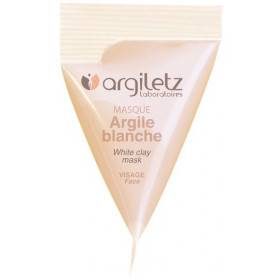
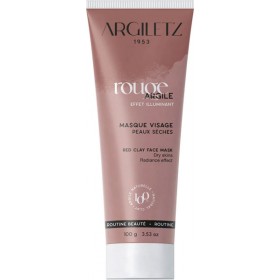
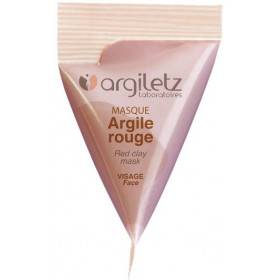
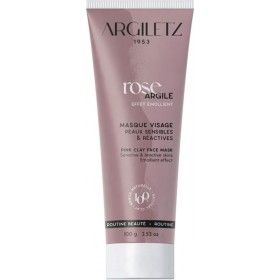
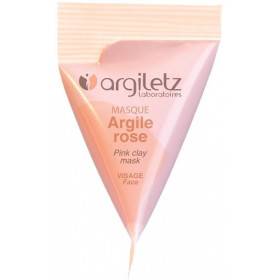
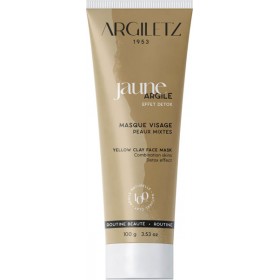
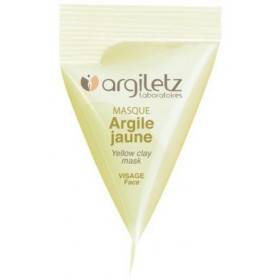
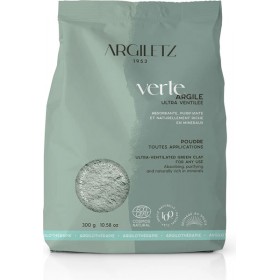
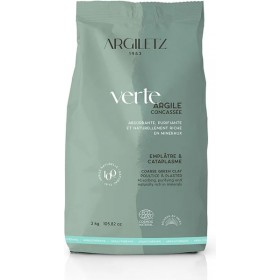
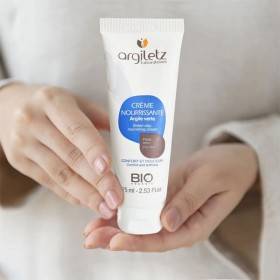
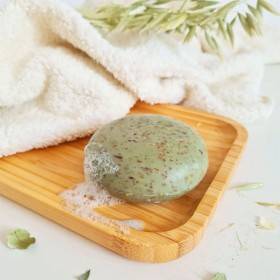
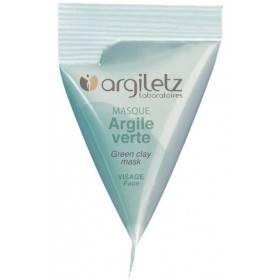
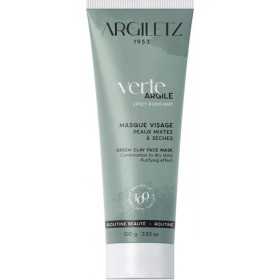
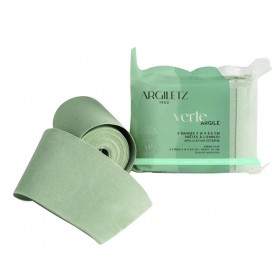

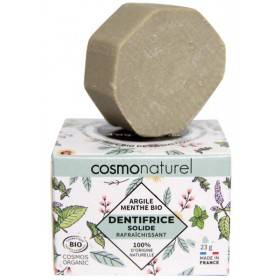
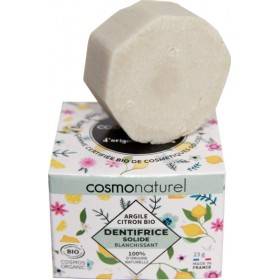
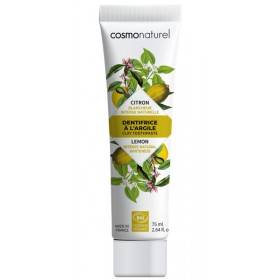
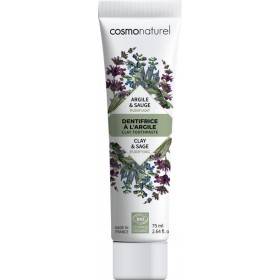
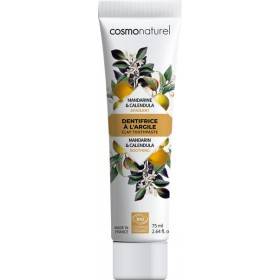
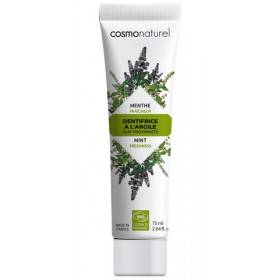
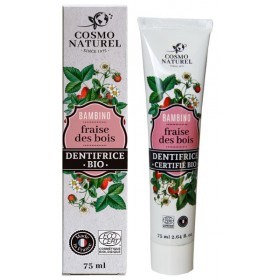
Customer reviews
Je viens de recevoir la pastille noire aujourd'hui et je vous remercie de votre envoi gratuit (ce qui est rare de nos jours).
Laurence
Colis très bien protégé service rapide. Merci. Site très sérieux .
Elios R.
Parfait comme site, commandes faciles à faire et livraison rapide !
Cindy
Livraison rapide et bien emballé. Petit message manuscrit qui fait plaisir :)
xx
Je tenais à vous remercier pour la commande que je viens de recevoir ce matin. Merci beaucoup et je n'hésiterai pas à recommander sur votre site.
Sandrine
Service rapide et efficace. Et Sympathique ! toujours un petit mot, ça fait la différence. Et c'est français en plus :). Je recommande.
XX
en comparaison d'autres produits employés précédemment, je trouve les vôtres beaucoup plus efficaces et cela sur le court terme ,disparitions des odeurs en combinant les produits suivant vos conseils .
XX
Bons produits, emballage impeccable, livraison super rapide ! Parfait !
XX
MOI JE DIS INCROYABLE !!!<br /> Plus que mieux d'une rapidité de dingue ! bravo et le colis impeccable surprotégé.<br /> Que toutes les entreprises prennent exemple sur vous. merci
AURELIE A.
Livraison rapide , le tout correspond à mes attentes.
Julie
Parfait comme d'habitude
Sylvain
je vous remercie pour vos services, c'est très agréable d'être informé de la sorte. colis bien reçu Merci pour la rapidité de la livraison
Bernard
Un accueil téléphonique très agréable et de très bons conseils. <br /> Merci à vous.
XX
Boutique sérieuse. Commande arrivée très rapidement. Merci pour votre gentil mot avec la facture.<br /> <br /> <br />
I Defoy
En cette période d'avant Noël, je craignais que me colis arriverais en retard. 48h après mon achat, c'était dans la boîte aux lettres. Du coup, je suis large pour mettre mon achat sous le sapin. Merci à vous
Art4
Maryse
Livraison rapide et produit conforme à la description. J'approuve à 100% le principe du recyclage des éléments d'expédition. Un produit fabriqué une fois soit avoir plusieurs vie. Bravo pour cette initiative.
Christophe
Françoise
Très bon produit juste ce qu'il faut à prix attractifs Envoi rapide.
xx
Bravo ! je vous félicite pour votre efficacité ne manquerai pas de vous conseiller. Merci à la prochaine commande
Anthony
Bonjour Monsieur,<br /> Nous nous étions parlés au téléphone il y a quelques années. Bravo pour l'évolution de votre site et vos dossiers instructifs. Vos produits aussi sont très bons. Bonne continuation, bien cordialement.
Marina
I had a marvelous experience with ordering and everything ! Thank you for a great service.
XX
Rapidité de traitement et petit mot avec le colis très appréciable.
XX
Everything was very nice ! Keep handling your customers likes this!
xxx
Penn' Ty Bio, c'est ma référence depuis 10 ans au moins. Je ne commande mes produits de toilette et d'entretien que chez eux. Les marques et le service est irréprochable.
GAELLE
Livraison ultra rapide, bien emballée. Produits au top. Parfait !
Caty
Site intéressant. Je l'ai découvert, en fait. Produits ménager éco-responsable. Bon pour la maison et non agressifs. Merci.
Mydiadao
J'ai été très déçue de ne plus trouver mon déboucheur dans mon biocoop habituel, et perplexe en apprenant qu'il était remplacé par un produit à base de soude...c'est comme ça que je vous ai trouvé sur internet.<br /> Alors merci pour le dépannage, pour le mot gentil qui accompagnait mon colis , et bravo pour le calage en amidon de maïs compostable!<br /> Bravo pour votre démarche et à très bientôt.
Cécile D.
Pour ma part j'ai été satisfaite de la réalisation de ma commande et du délai de livraison. Je recommande votre société.
Nelly
Excellent site d'achat. Très rapide et que de bons produits.
James
Merci pour cette première commande, envoyée très rapidement, et dans un petit colis, avec frais de port très raisonnables.
Valérie O.
merci pour le suivi de ma commande et les mails par lesquels vous m'avez tenu informée.
Zoé
Très bien...merci.
Olivier
Rapidité de livraison. Très bon produits. Merci
Mélina
Très satisfaite. Je recommande cette société sérieuse. bon suivi de la commande.
Sandrine
Site sérieux. Bons produits.
Magali
Produits performants. Très satisfaite de vos services.
XX
Site internet complet, beau et facile d'utilisation<br /> Commande complète et correcte.<br /> Commande emballée a la perfection avec du matériel recyclable, compostable<br /> Délai d'envoi respecté même a l'étranger (Pays-Bas)<br /> Mention spécial pour le petit mot personnalisé ++<br /> On sait pourquoi on commande chez Penntybio depuis 10ans :)<br /> Bonne continuation
Jennifer A.
Bon rapport qualité-prix. Envoi rapide et sécurisé !
Chrile
Rapidité, emballage nickel et écologique, mot de remerciements personnalisé, produits au top....j adore....je suis une nouvelle cliente conquise. Un grand merci...
Hélène P.
très bien livraison dans les délais, colis intact, bon produit.
Martine
Cela fait plusieurs fois que je commande chez Penn'Ty Bio et je suis toujours satisfaite de la qualité des produits et de la rapidité d'expédition. Je recommande ce site !
Ghyslaine
Excellent article sur les diffuseurs d'huile essentielles ! grâce à lui j'ai pu faire mon choix basé sur une excellente analyse de votre part !
Laurence
Franchement, Penn'ty bio, c'est top ♥<br /> Quentin est super réactif, de très bons conseils. Encore merci de votre efficacité.
Hélios ☼♥
Avec les trois lettres BIO dans votre nom, je ne m'attendais pas à découvrir des billes de polystyrène comme matériaux de rembourrage. Il y a certainement plus écolo !
Michel D.
Après la découverte des punaises de lit dans 2 chambres de notre vieille maison, j'ai trouvé votre site. le dossier m'a été très utile et je suis très contente d'avoir trouvé des produits moins toxiques que ce que proposent les autres sites de vente.<br /> Je vous remercie d'avoir répondu à mon mail car c'est un peu l'affolement quand on découvre chez soi des punaises de lit.
Françoise S.
Efficace rapide et à l'écoute. Diversité des produits. Efficacité des produits. Respect des délais de livraison et prise en compte des spécificités client PMR ( ce n'est pas toujours le cas). Site bien fait pour navigation et produits bien mis en valeur. Des promos et des bons de réduction cumulés en fonction des achats. Merci pour votre efficacité rapidité et professionnalisme.
xxx
Louise
comme toujours excellente réactivité, livraison très rapide et qualité produits TOP. Merci pour votre compétence.
Annick P.
Tout est parfait de la commande à la réception. Commander jeudi et reçu samedi. Et très contente de mon achat . Je recommande
Nadege M.
Super produits, envoi rapide et soigné, conseils et échanges courtois ! Une jolie boutique en ligne pour acheter en toute confiance ! <br />
Patricia
Après essais de divers produits, votre insecticide 4J est le seul à être venu à bout des puces ramenées par le chat de la maison. Livraison rapide par chronopost
JEAN MARIE
Rapide, sérieux, très bien emballé, un sans faute.Merci.
L.H.
Super, livraison rapide, suivi très rigoureux, site de confiance, très sérieux à recommander... Merci pour tout.
Bernard
Très bon site. Envoi rapide. Prix moins cher que sur d autres sites. Bravo et bonne continuation.
Camille
Très bon site, du personnel sérieux et la livraison en temps et en heure. Merci
Marine T
Excellente réactivité !!! Produit en stock, commandé le 23 dec à 8h30, recu le 24 dec à 9h30. On peut guère mieux faire ! Super communication avec le vendeur.
Xavier
Site de grande qualité !
Rose Anne Marie
J'ai été TRES bien conseillée lors du contact. Produit naturel donc c'est parfait.
Lilla
Merci pour votre envoi : rapidité, ponctualité, information de suivi du colis etc. Vraiment du bon boulot.
E.G
J'ai enfin reçu le petit colis, hier. Il a mis un mois pour me parvenir, mais vous n'y êtes absolument pour rien, comme je le pensais, il a été mis de côté lors de la grève nationale. Je vous remercie d'avoir fait faire des recherches, j'ai reçu un mot de la poste.
Hervé
Bonjour <br /> C'était ma première commande sur votre site et j'en suis très satisfaite <br /> Je vous remercie pour votre professionnalisme (site, prise de commande, livraison) ainsi que pour le petit mot qui rend le tout humain. Très belle journée.
CG
Très bon site, très sérieux je recommande, produits de qualité et service après vente au top, de plus livraison des plus rapide et produits très bien emballés, tout est parfait
virginie
Une entreprise fiable, efficace, de confiance, chez qui je recommande de faire ses achats.
S.
J'apprécie les services de Penn'ty bio. Un maximum d'étoiles pour eux.
Ch. D.
Bonjour, j’apprécie depuis longtemps votre travail : la qualité de vos informations et des produits que vous vendez.
Frederic
Je vous remercie beaucoup de m’avoir fait profiter d’un acheminement par Colissimo alors que rien ne vous y obligeait, sauf votre conscience professionnelle, chose rare de nos jours et qu’il ne faut jamais manquer de souligner.
Cécile
produit parfait.
René
Site très sérieux, de très bons produits et la livraison est rapide.<br />
Isabelle
Une grande compétence, Monsieur Dufil est très professionnel et sait soigner ses clients. Quand à la gamme de produits proposés, elle est parfaite et complète.
Alain A.
Grande gentillesse et efficacité : que demander de plus ? Merci !
Chantal M.
Merci. Je tenais à vous faire part de ma grande satisfaction. Je suis enchantée par les produits et par le service. Salutations et bonne continuation,
Odile
Super, envoi rapide,bien protégé et petit cadeau !
xx
Parfait ! Envoi rapide et produits de qualité. Merci pour le petit mot. Je suis très satisfaite !<br />
Julieanaïs
Service rapide et efficace. Bons produits
XX
Livraison express. Colis toujours aussi bien préparé (cales, flocons, adhésif sur les bouchons qui risquent de couler). Bravo pour votre professionnalisme.
Isabelle
Sav rapide et disponible. Au top
Severine
MERCI au personnel à l’emballage !!! Ma dernière commande était super bien emballée. Elle a résisté aux (épouvantables) chocs subis pendant le transport. Merci
Veronique
Produit performant et raisonnable au niveau prix. Je recommande
XX
Jean Claude
service très efficace à chaque fois que j'ai commandé. aucune mauvaise surprise sur la livraison. je recommande
Agnès
Merci pour tout le soin que vous mettez pour une livraison individualisée, chaleureuse et aussi peu impactante que possible sur l'environnement !
Sandra
De très bons conseils, une livraison rapide et des produits de qualité !
Fabienne P.
Boutique très sérieuse avec un envoie rapide et des produits super efficaces.
XX
anne-marie B.
Explication, commentaire et livraison en un temps record, tout était parfait, même le petit mot de remerciement écrit à la main ! Merci beaucoup
Monique S.
Après un souci sur l’article livré, le site a fait preuve d’une excellente communication (simple et efficace par sms) qui m’a permis de me faire livrer un 2nd article par la marque très rapidement. Parfait !
Pierre
livraison rapide, produit conforme.Prix séduisant.
XX
accueil téléphonique personnalisé réactif compétent et bienveillant, livraison rapide et conforme. BRAVO merci pour la qualité de votre travail
Annick
2 commandes à mon actif et jamais déçue. Vous avez gagné une cliente régulière :) Merci pour votre sérieux et le contenu bien rempli de votre site ! c'est super d'avoir une description hyper détaillée de chaque produit.
Magali
Les produits sont de bonne qualité. Leur prix est raisonnable. Ils sont livrés rapidement, et en bon état.
XX
Correspond à mes attentes
Henry
Ma commande s'est déroulée sans aucun problème avec une livraison rapide et soignée. La satisfaction est au rendez-vs ! Continuez ainsi ! Merci et cordialement !
Etoile 07
Très réactifs entre la commande et la livraison. Je suis toujours satisfaite de mes commandes soigneusement emballées !
France L B
Excellent service après vente après un problème d acheminement de colis par la Poste. Une relation client de très grande qualité. <br /> Cordialement,<br /> <br />
PV
Un grand merci pour votre professionnalisme et la qualité de vos produits. Longue vie à votre site.
XX
Très bien !
XX
Très contente d'avoir découvert ce site internet ! Du conseil jusqu'à l'achat c'est super. J'étais très embêtée après l'apparition de petit insecte chez nous (des anthrenes) et c'est le seule site internet e-boutique qui a pu nous renseigner dessus et enfin indiquer les produits pour les éradiquer sans pour autant nuire à notre santé (mais en respectant les conseils d'utilisation bien sûr). J'ai reçu ma commande rapidement, et avec surprise un petit mot de remerciement personnalisé avec mon nom dessus. Des détails qui au finale font la différence. Un service de qualité rien à dire. Merci !
XX
Toujours parfait, livraison, emballage, délai et gentil petit mot personnel pour me remercier de ma fidélité.
XX
Suite à un précédent message notifiant une erreur de produit à la livraison, Penn'Ty bio m'a fait parvenir à titre gracieux le bon produit. Merci
Martine
Envoi rapide et soigné. Emballage ecoresponsable. Je suis ravi d’avoir trouvé des pièces de rechange pour les diffuseurs à huiles essentielles!
Ina L.
Client depuis de nombreuses années, je suis satisfait à la fois de la boutique et de pratiquement tous les produits achetés.
Jean-Claude
Bon produits et service !
Rose-Marie
Un plaisir de recevoir les colis soignés et respectueux de la planète de Penn’Ty Bio. Merci
k.
Produits de bonne qualité, naturels et efficaces, expédition rapide et bien emballée, sav très rapide suite à une erreur de ma part,
XX
J'ai reçu le colis, merci beaucoup de votre promptitude et bonne continuation.
Louise
J'ai passé ma première commande, chez vous il y a trois jours à peine et ce matin, je reçois mon colis.
Sophie
ANNE
Très rapide pour la livraison en Belgique et sérieux. Merci<br />
Corinne
Commande tout à fait conforme et emballée avec grand soin.
Sarah
Nous sommes très satisfaits du service client : mot personnalisé dans le colis, disponibilité du service après-vente... Nous souhaitons à votre société un succès croissant.
Sara
Site clair, envoi rapide, marchandises bien emballées, et un petit mot charmant!
SM
Livraison rapide et petit mot manuscrit joint au colis, vraiment très sympa! Merci et continuez, vous le méritez.
Jean-Pierre
Comme d'habitude, envoi soigné, produits performants, Merci.
XX
Site pratique, compétent, prix corrects. Un envoi très rapide, et je dirai "parfait".
Greg
super emballage écolo...bravo !
Isa
Très satisfait de Penn'Ty Bio : choix étendu,prix raisonnables délais de livraison rapides.
xx
Merci pour vos conseils avisés. Et merci pour vos produits de qualité.
Loïc
Site intéressant proposant de bons produits, attractifs et respectant la nature. Le regret c'est le prix de certains articles.<br />
Catherine
Félicitations pour la qualité de votre site & la valeur de ses informations ! Continuez ainsi ! On a besoin de vous !
Ronald
Livraison rapide et fiable, dès que le chèque a été reçu. Produits de bonne qualité.
Chantal H.
Rien à redire, de la commande à la livraison.
XX
Excellent site. Très à l'écoute. Livraison rapide. Problème avec un piège à guêpes un autre m'a été livré très rapidement. Chapeau et très agréable de tomber sur des gens compétents.<br /> Encore merci.
XX
Mon avis sur penntybio, très bon produit sur ce site pas une gamme monstrueuse mais que du très bon, et pareil pour les livraisons ultra rapides et le excellent sav si besoin. Je recommande vivement. Client depuis 2018 aucun soucis.<br /> <br />
thierry g.
Merci et bravo pour la qualité des produits et du service toujours aussi efficace et performant.
Annick P.
Un grand merci pour votre offre et votre professionnalisme. Pour un service en ligne, vous savez vous rendre proche de nous. Bravo et "suerte" !
Pierre M.
Efficace, livraison rapide.<br /> <br />
H
Personne disponible, de très bon conseil suite à des punaises de lits dans mon habitation, les produits sont efficaces car depuis aucune punaises et la vie à repris son cours ... merci pour tout
Nathalie
Commande reçu en 2 jours, impeccable. Tous les produits emballés avec le plus grand soin, petit mot personnalisé! Et encore un petit savon bio au parfum délicieux comme cadeau!! Merci Penn'Ty Bio !!
Orchidée
Cliente fidèle depuis plusieurs années, je ne peut que recommander ce site. Tout est parfait. Tous les produits au top, rapidité d’envoi, gentillesse, allez y les yeux fermés vous ne serez jamais déçus.
Marité 06
Je suis cliente depuis de nombreuses années. Toujours satisfaite du site, des produits et de la livraison.
martine O.
Les produits commandés sont conformes à mes attentes. Quant à l'accueil au téléphone, il est parfait et nous avons toujours trouvé un terrain d'entente. Je fais confiance à Penntybio.<br /> Merci.
XX
Un diffuseur plus de 80 M², avec huile essentielles eucalyptus, vraiment formidable, on respire mieux et çà sent super bon. Le matin 1 heure, et le soir 2 heures. De jolies couleur, et pour les fêtes une jolie ambiance. Bravo.
PATRICK
Marie-Noëlle
Un super magasin en ligne, avec plein de produits disponibles.<br /> L'envoi a été très rapide et soigné, avec une très bonne communication à chaque étape. Bref, une adresse à connaitre et à garder ! Merci !
Pab57
J'ai bien reçu ce jour, en bon état, les 2 diffuseurs galets. Merci aussi pour votre petit mot manuscrit me souhaitant un bel été. Fidèlement,
Annie
On ne peut pas toujours faire confiance à des sites de ventes sur le web, mais sur Penn'Tio, j' y viens les yeux fermés. Excellente communication avec le service clientèle, un suivi sérieux. Je remercie chaleureusement toute l' équipe.
Sergine T.
Super !
Yann
Livraison rapide , produits de qualité, je recommande Penn'Ty Bio.
XX
merci de votre disponibilité et amabilité!
Eric
Je suis très satisfaite de mon échange avec le service client (personne à l'écoute, de bon conseil). Envoi rapide et soigné, avec un petit mot sympathique de l'équipe, le top!
XX
Livraison très rapide. Bravo pour la réactivité
François
Envoi très rapide et bravo pour votre site de reconnaissance des insectes nuisibles.
Brice
Fidèle à votre marque, je tenais par ce mail à vous féliciter vous et votre équipe pour votre longévité. Votre marque est toujours gage de qualité et sérieux.
Céline
Livraison conforme et rapide. Les produits sont emballés dans des emballages recyclables, voire compostables : j'ai beaucoup apprécié. Je recommande ce site.
Patrick
L’esprit commerçant de proximité chez un vendeur en ligne !
Philippe
Marie Aline Roux
j'ai reçu mon colis aujourd'hui, merci c'est très rapide et sérieux.
Clara
Cliente depuis plusieurs années. Super service, réactif, cordial. Les produits sont excellents.
Christine
très bien je recommande.
Sylvie
Je ne connais pas encore tous les produits mais contente de ce que j'ai commandé. En revanche un peu cher quandmême ce qui me limite.
xxx
Je voulais vous remercier +++ pour votre gentillesse et surtout... votre compétence. C'est vraiment de l'excellent travail... j'ai été bluffée :-)<br /> Renseignement téléphonique 10/5 - produit 10/5... encore merci
Maryse
Pennty bio prends le temps de renseigner et donne de très bons conseils.<br /> Les produits sont emballés soigneusement et la préparation des commandes hyper réactive. Je recommande les yeux fermés !
Mattloumag
Bravo ! je vous félicite pour votre efficacité et ne manquerai pas de vous conseiller.
Nicolas
Merci pour votre geste que j’apprécie.<br /> Cela fait plaisir de retrouver l’esprit commerçant de proximité chez un vendeur en ligne. Je surveillerai attentivement cette nouvelle livraison.
Philippe
Un grand merci pour la qualité et la rapidité de votre réponse.
Simon
Très contente de vos produits.
nathalie G.
Tout était parfait l’envoi la livraison merci beaucoup
XX
Tout est parfait : la qualité des produits, la rapidité d'expédition, la qualité du colis. Je suis enchantée et resterai fidèle à ce site.
Dominique
Dommage, les vendeurs ne savent pas lire les indications inscrites sur les produits qu'ils vendent
XX
Après 2 traitements à 3 jours d'intervalle, j'ai réussi à éradiquer toutes les punaises de mon canapé. Produit hyper efficace que je recommande vivement.
Emmanuelle
Très bien , bon produits, La prochaine commande avec plaisir, livraison très rapide.<br />
Rainer
Colis bien arrivé. Emballage remarquable. Diffuseur très joli, très efficace et peu bruyant avec de la couleur qui change. Très satisfaite de la commande.
Sabrina
SATISFAITE
ANNE
trés satisfaite de ma commande,( produit, et livraison,rapide ) MERCI
Danièle M.
Une utilisation de vos produits a suffit pour nous débarrasser des poissons d'argent. Merci.
Matthieu
Je confirme efficacité sur la préparation et expédition du matériel. un grand merci
Jeremy
livraison tip top tant en temps et en qualité.
XX
Je suis une amie de vos parents et suis toujours très satisfaite de tous vos produits. Ne changez rien et bonne continuation.
Marité D.
Je me permets de vous écrire un petit mot afin de vous dire que votre site est très bien fait.
Tom
J'apprécie depuis de nombreuses années la qualité de vos produits et le sérieux de votre site. Une petite mésaventure avec un diffuseur me permet de vous féliciter pour la réactivité de votre SAV. Bravo !
Thierry G.
Je tenais à vous remercier pour votre service de qualité, une livraison toujours rapide, des colis bien emballés - qui évitent fuites et casse, ainsi que pour le petit mot personnalisé joint à chaque commande, c'est toujours très agréable.
Isabelle G
Tout était parfait. Produit, prix, délai.
Marco
Livraison efficace et bon contact oral avec mon interlocutrice.
Maussane
Je vous remercie de votre professionnalisme et de votre réactivité.C'est loin d'être toujours le cas lorsque l'on commande sur internet.
Gaëlle
Livraison toujours rapide. J'ai expérimentée le service après vente qui à été excellent avec une réparation rapide et sans frais. Je recommande vivement Penn'Ty bio
Nadine
Bon produit. Merci Penn'Ty Bio. Un seul passage dilué à 5% et les puces ont disparus. Il en restait deux ou trois qui ont dû se perchés pendant le traitement mais sinon c'est performant.
Axel
Bonjour, colis bien emballé arrivé sans encombre, démarche écolo bien ancrée et petit mot perso. Merci à l'équipe de Penn'Ty Bio.
Sofi
Hyper cher :: très déçue du prix par rapport à la quantité de produit acheté. Sur le site internet, les flacons semblent grands, or pour 80 euros je me retrouve avec 4 flacons de petits produits insecticides... trop cher
xxx
Commande facile, livraison impeccable et produits fiables. Merci.
Isabelle
Produit anti puce extrêmement efficace !<br /> Le vendeur a pris une demi-heure de son temps pour m'expliquer absolument tout ce qu'il y avait à savoir sur le produit, de la composition a la mise en œuvre.. Bref au top ! Je recommande donc vivement Penn'ty !
Louis
Commande reçu très correcte, très bon matos, encore merci et bonne continuation.
Dominique et Monique A.
Service de qualité, suivi rigoureux, et rapidité au rendez-vous. Les produits sont très fidèles à leur description et pour un coût serré. A recommander fortement.
JACKY
Merci à Penn'ty bio d'avoir garder beaucoup de produits de la marque Lerutan et pour le sérieux dans la préparation et l'expédition des colis. Je recommande.
SR
Première commande chez Penn'Ty Bio : <br /> - navigation sur le site = 5/5<br /> - préparation du colis = 5/5<br /> - Prix compétitifs = 4/5<br /> - Qualité des produits sélectionnés = 5/5<br /> <br /> Vendeur à recommander.
Gaëlle
Commande reçue rapidement, très bien
XX
Livré hyper vite. Bravo !
Mick
C'est vraiment magnifique et ce cadeau a plu, je commanderais pour Noël.
Martine
J’ai bien reçu le nouveau diffuseur fonctionnel après essai et je vous remercie pour votre confiance et votre rapidité sur le traitement de mon problème. Ce n’est pas tous les jours que l’on voit un SAV aussi efficace !
Florent
Sophie. A
Produit de qualité conforme à mes attentes, envoi rapide et soigné, très bien.
Anne
Je suis arrivée sur votre site en cherchant un diffuseur que je viens de commander, mais je voudrais vous dire que votre site est très intéressant, bien fait. Vos dossiers sont enrichissants merci
Joelle
Très bon site. Navigation facile. Les commandes sont expédiées rapidement comme annoncé. Aucun problème depuis que je suis cliente. Je recommande Penn'ty bio.<br />
Elvyne
Super produits accueil plus que parfait gentillesse. Livraison au top merci beaucoup
Christiane
Une boutique en ligne, sympa et très réactive. On apprécie surtout la livraison express. Pas besoin d'être américain pour livrer dans des délais de champion !<br /> <br />
Daniel de Paris
Je parlerais de vous a mes amies car vos produits sont vraiment excellents. Bien a vous et tous mes remerciements.
Patricia
Commande reçue assez rapidement. Merci pour votre sérieux.
Émilie
Tout à fait satisfait de la qualité de la livraison ainsi que du produit commandé.
Régis
Toujours très bien et parfaitement emballé ! Merci<br />
Valérie
Les produits achetés sur le site sont de très bonnes qualités, et j'ai été très bien conseillée. Je recommande !
Aurore
Service très professionnel et très rapide. A conseiller fortement.
Didier M.
J'ai découvert ce site en cherchant de la terre de Diatomée. Livraison rapide. Très sérieux. J'ai mis la page dans mes favoris car j'ai repéré d'autres produits.
Isa
Toujours aussi "réactif" et efficace<br /> Bravo et merci pour votre professionnalisme.
Annick P.
Service clientèle très réactif en cas de difficultés. Livraison rapide. Emballage des produits fragiles excellent. Maison sérieuse, je recommande.
Marie
Diffuseurs qui sortent vraiment de l'ordinaire, un envoi parfait - merci BCP
Anthony
Très satisfaite. Merci.
CM
Bien, la majeure partie des produits sont efficaces. Je connais cette boutique depuis plusieurs années, je recommande ce site.
XX
Les produits achetés sont excellents. Ils répondent parfaitement à ce que je cherchais. Bravo pour votre site
Michel
Très satisfaite.
Louise
Commande reçue rapidement, frais de port raisonnables pour expédition à l'étranger et les produits sélectionnés au top! Merci!
Cédric Adolphe B.
Commande passée le jeudi soir, colis livré chez mon "commerçant-relais" le samedi matin. Quelle rapidité ! Du vrai professionnalisme !
Emeline
Site très pratique. Commande aisée. Suivi régulier. Délai de livraison respecté. Colis très soigné. Tout est parfait.
Nicole
Tout est parfait à chaque fois. L'attention portée va même jusqu'au petit message, c'est agréable. Fidèle aux produits et au site plus que jamais.
xx
bravo pour votre réactivité et la qualité des produits
Annick P.
super contente, j'y trouve facilement les produits dont j'ai besoin et le service est impeccable et gentil !
Hélène S.
j'ai reçu mon colis aujourd'hui, merci c'est très rapide et sérieux.
Nathalie
Client depuis des années Produits de qualités et surtout qualité de service.
XX
livraison impeccable, produit bien emballé et correspondant au descriptif, excepté pour la surface de diffusion, ma salle principale doit faire 25m2 maximum et ça ne se diffuse pas au-delà.
Pascale
très satisfaite de ma commande site vraiment sérieux livraison soignée et rapide ,les articles sont conformes a la description,je suis enchantée et recommande vivement
Marie Viviane C.
Produits utilisés depuis très longtemps, toujours la même qualité ! Je recommande, les délais de livraison sont très courts, produits très efficaces.
Laurence
Commande bien reçue;je suis tout à fait satisfaite;à bientôt
Sonia
Bravo et merci : produits de qualité et service TOP... continuez !...
XX
Totalement satisfait. Les produits sont super efficaces et tout est très bien suivis. Je recommande vivement ce site.
Stéphane N.
Très satisfait du site livraison rapide.<br />
Michel
Très satisfaite du produit.Rapidité et emballage très soigné.SERIEUX.
MARLENE
Bon produit , envoi rapide.<br /> <br /> <br />
Christine
Dimanche soir, invasion de vrillettes du pain. Lundi matin, commande en urgence des produits verts adéquats. Mardi, livraison, traitement et fin de l'invasion.
Jean-Pierre
Jamais déçue : les produits correspondent à la description et sont livrés rapidement.
Mireille
Livraison rapide. Produits bien emballés.
Bruno
Parfaitement parfait, je ne me fournis que chez Penn'ty bio depuis qu'ils m'ont débarrassée de punaises de lit.<br />
MARIE CLAUDE G.
Impeccable.
Christine
Au fil de mes commandes (j'en suis à la 5 ou 6ème) décidément, du sérieux et de l'écoute ! chaque fois que j'ai eu un petit problème: contact immédiat, réponse immédiate, et tir rectifié illico ! Dans le top 5 de mes sites internet !
Vincent
je viens de réceptionner ma commande. Tout est ok. Merci pour ces produits respectant l'environnement et l'être vivant.
Anatole
Bon produit mais frais de port un peu cher.
Marie Paule
Prix intéressants. Expédition super rapide à bon prix. Et tout ça de façon agréable !
Alexis M.
Commande bien reçue ! Bien emballée ! ! ! Jolis produits ! Merci !
AYH
Noëlle G.
Très satisfaite de ma commande chez Penn'ty bio. Site très détaillé, produit reçu rapidement, message manuscrit très sympathique. Je recommande !
XM
Service très réactif, emballage soigné , livraison rapide. <br /> Rien à redire . Continuez !!
Sophie
Efficacité de la livraison , très rapide . Produits livres en parfait état . Très bien emballés . Merci.
Geneviève
J’ai bien reçu mon colis et vous remercie de votre rapidité. Bravo pour le geste écologique et durable. Emballage nickel ! Et mon chat a adoré jouer avec les billes jaunes !
Anouk
Parfait! Préparation et expédition de la commande hyper rapides. Emballage très soigné (j'ai acheté un produit fragile). <br /> Je suis très satisfaite!
Elise M.
Commande bien reçue . Je suis très satisfaite Merci pour votre sérieux
LILIANE
Un grand merci pour cette commande envoyée très rapidement. Je recommanderais votre site
Elise
Vos explications par email ont été très claires et votre diligence dans le traitement de ma commande et de mes demandes est très appréciée.
Henri
Bravo pour votre sérieux. Colis reçu très vite et produits impeccables. Belles fêtes de fin d'année
Mat
JM
Site très sérieux et personnel vraiment agréable. Envoi rapide. C est parfait !
Ingrid
Merci pour votre efficacité et votre gentillesse, commande, livraison, petit mot agréable, tout était parfait !
Sylvie
Efficacité redoutable. enchanté.
Robert
Livraison rapide, emballage plus que parfait, le diffuseur NEOLIA est merveilleux pas bruyant, fonctionnement idéal. Merci PENNTYBIO pour votre sérieux, site web à recommander.
CLAUDE
Satisfaction totale. Entreprise au top. J'ai téléphoné le lundi matin, malgré que les contacts téléphonique ne sont que l'après midi, une personne très charmante m'a rappelé presque aussitôt pour mes donner les infos que je souhaitais connaître sur ma commande. Bravo. nous sommes mercredi et ma commande est arrivée. Encore bravo continuez comme ça.
Jacques M.
C'est la deuxième fois que je commande sur ce site. J'ai découvert qu'il existait des verreries aux dimensions différentes. Mon diffuseur étant ancien, j'ai chercher le modèle le plus adapté et j'ai trouvé! Mon diffuseur fonctionne à nouveau
Christiane D.
BIEN,CONTINUEZ COMME çà.
XX
Service au top !!!<br /> Colis reçu très rapidement avec un petit mot manuscrit me remerciant de ma commande et de la confiance que je leur ai témoigné <br /> Suffisamment rare pour être signalé <br /> Je vous encourage toutes et tous à les soutenir en passant commande chez eux!!!!<br /> Longue vie à Penn’Ty Bio !!!!<br /> Ils le méritent
Pierre-Steph
Je voulais non pas faire une réclamation; mais vous féliciter pour vos produits que j' ai bien reçue, et également pour la rapidité de votre envoi ce qui est plutôt rare dans d'autre site.
Jérôme
J'ai reçu mon colis hier. Merci de vos démarches,
Sam
Merci et surtout, continuez, c'est rare de trouver sur internet une relation aussi personnalisée sur un mode aussi agréable.
Sabine
Jean-Yves
Très bon produit, conforme à la description.
MICHELE P.
Comme toujours service "au top" réactivité, qualité produits... BRAVO et merci pour la qualité de votre travail
Annick
Beaucoup de soins dans la commande reçue. Je recommande!
XX
Super efficace !!!
xx
livraison rapide ,prix raisonnable , produits super efficace j'ai vite calmé mes douleurs lombaires ...enfin soulagée . Merci pennty bio
JEANNINE
Très bons produits efficaces.
XX
Très bien ! envoi rapide et conforme à ce qui est annoncé.
Jacqueline S.
fidèle cliente de Penn'Ty Bio, je ne me fournis que chez eux.
XX
fiable et de bonne qualité pour les services et les produits :)
XX
Excellentes prestations. Les produits sont formidables, l'emballage aussi. Les délais d'expédition compétitifs. Je recommande vivement Penn'Ty Bio à tous ceux que l'état de la Planète pour les générations futures inquiètent.
XX
Merci à Penn'Ty Bio pour la qualité des produits, la réactivité de l’Équipe et le petit mot attentif qui accompagne les colis. Votre site est précieux !!
Veronique B.
Très bons produits je les recommande.<br /> Merci à Pennt'ty Bio pour tout, aussi bien pour les commandes et les emballages.<br /> Bravo Pennt'ty Bio.
Bernadette G.
Merci pour l'expédition de la pièce de verrerie qui a été recu cette fois sans casse. Meilleures salutations et à très bientôt sur votre site pour un prochain achat .
Louane
Envoie soigné et rapide.<br /> Merci pour le petit mot à la main.<br /> Très appréciable.
XX
Excellents produits. Excellent service.
James T
1ère commande. Très satisfaite : Colis expédié très rapidement et bien emballé. Merci pour votre sérieux.
Ghyslaine
Bonjour Sophie et Quentin,<br /> Je viens de recevoir ma commande et je tenais à vous remercier pour la rapidité de l'envoi, votre gentil petit mot et le petit présent qui sent bon et donne envie. Bel été à vous deux également
Geneviève
Commande et livraison rapides!<br /> Rien à dire, c'est parfait !
Christine
Bon choix, bons conseils et service livraison très rapide. J'aime faire mes courses sur ce site.
FDA
Service de qualité, suivi rigoureux et rapidité au rendez-vous. Mon colis est arrivé vite même avec un paiement par chèque. Les produits sont très fidèles à leur description et pour un coût serré. A recommander fortement.
Vincent
Très satisfaite par Penn ty bio. En effet, suite à un produit défectueux ( housse matelas) , j'ai aussitôt reçu un bon de retour pour renvoi gratuit en colissimo et ai reçu la nouvelle housse dans les 48 h, avant même le renvoi de la première housse. Merci pour la réactivité et la confiance de cette entreprise.
dominique B.
Livraison très rapide; Tout était parfaitement emballé. Je referai appel à vous.
JV39
Client depuis plus de 10ans. Toujours satisfait du matériel propose. Boutique sérieuse prix compétitifs livraisons et suivis rapide.
XX
Merci à tanteOdile pour m’avoir fait découvrir votre site. Depuis je suis une cliente assidue. Très satisfaite de la rapidité des envois, de la qualité de vos produits qui sont par ailleurs très bien détaillés par leur composition et leur mode d’emploi. Une amie vous a rejointe également avec la même satisfaction <br /> Continuez.
Marité D.
Merci pour votre sérieux et la réexpédition ultra rapide d'un achat non conforme (dont vous n'étiez pas responsable).
Marc
Hélène
Toujours satisfait et pour les prix et pour les produits.
andré a.
Livraison très rapide et produits bien emballés.
Catherine
Produit conforme aux attentes.<br /> <br /> <br /> <br />
Alain
rien a redire, sauf, le montant des frais de livraison, un peu élevé.
XX
Livraison rapide et soignée. J'utilise les produits bio qui sont de très bonnes qualités. Un savon m'a été envoyée par erreur à la place de celui commandé et il m'a été remplacé très rapidement. Bravo pour leur réactivité. Je recommande fortement ce site.
Liliane
Livraison rapide et avec colis préparé avec soin :)
Florian
Bien reçu. Bravo pour votre extrême rapidité. Merci
Magali
Très bien, je recommande cette boutique
Salomé
Parfait !
Mireille
excellent.
XX
Merci pour le geste commercial, et aussi pour les nombreux conseils et l'excellent service client.
Tristan L
J'ai bien reçu mes articles et je vous remercie pour la livraison rapide et impeccable !
Françoise
Je suis vraiment très satisfaite de la prestation de ce fournisseur : délai de livraison très rapide et emballage des produits réalisé avec un maximum de soin. Bravo !!
Eliane
j'ai bien reçu la commande et je vous remercie pour votre efficacité.
Margot
Un grand merci pour la qualité et la rapidité de votre réponse.
Tony
Merci beaucoup pour l'info, c'est rapide chez vous, très appréciable!
Denis
J'ai toujours été satisfaite de mes commandes chez Penn'ty bio. Rapide efficace. Surtout les caractéristiques des produits est claire et complète. et le site contient beaucoup d'informations sur les différentes gammes. Merci pour votre travail et votre activité.
XX
Alex
Excellents services, très serviable
XX
Envoi rapide et soigné, produits efficaces et réponse rapide à mes questions. Je recommande.
xx
Entièrement satisfaite.
Ch. D.
Quel dommage pour le produit manquant, je vous remercie pour le remboursement.
Didier
yvette
Content des produits achetés, reçu rapidement et bien emballé. Merci.
XX
Envoi rapide. Rien a redire.
Marie France
Infestés de puces de parquet, le produit a agi en moins de 24 heures. Livrés en tout autant de temps. Le seul produit qui ait fonctionné et en plus archi cool pour la nature.
Nicolas
Livraison très rapide et colis emballé soigneusement.Site à recommander.
isabelle d.
Je suis ravi de trouver les produits de qualité et d ‘efficacité incomparable.
Denitza K.
Site de produits naturels et bio très bien fait, agréable et fiable. beaucoup de produits de qualité.
Anne Marie R.
Je vous remercie pour vos services. C'est très agréable d'être informé de la sorte.
Anthony
Claudine
Commande bien reçue. Je suis tout à fait satisfaite. A bientôt.
Tania
C'est ma première commande chez Penn'Ty Bio, et ce ne sera pas la dernière.<br /> J'étais à la recherche d'un nouveau diffuseur d'HE et, après discussion avec Quentin, mon choix s'est arrêté sur l'Elixia (Direct Nature) qui est d'une efficacité redoutable et d'un silence absolument surprenant.<br /> La livraison s'est faite en 72h en point retrait avec un conditionnement hyper sécurisé.<br /> Lors du déballage, j'ai constaté un léger défaut de finition sur la verrerie.<br /> J'en ai fait part à Quentin par texto avec photos à l'appui.<br /> Il m'a aussitôt recontacté pour me proposer un envoi d'une nouvelle verrerie dès que disponible.<br /> Un professionnalisme et un sens du service exemplaires qui font de cette enseigne une valeur sûre.<br /> Penn'Ty Bio est vraiment la boutique en ligne qu'il vous faut connaître.<br /> Je vous la recommande vivement.
Jean-Yves S.
Parfait.
Philippe
Très bon site avec de très bons produits et un soin particulier apporté à la préparation de chaque commande... De plus, Sophie et Quentin prennent la peine d'écrire un petit mot de remerciement avec la commande envoyée....c'est peu commun mais très sympa....:-)
STEPHANE P.
Les produits ont été très appréciés par la destinataire. <br /> De plus quand on pose une question, on a toujours une réponse, un conseil très rapidement. Merci pour votre réactivité
xxx
Vos produits sont de bonnes qualités et les produits très bien emballés
Dominique
Produits facile à utiliser, efficaces et finalement pas plus onéreux, à l'usage que des produits issus de la pétrochimie. Service livraison impeccable. Je recommande +++<br />
XX
Envoi rapide, emballage au top, continuez comme ça... :-)
bruno b.
Merci beaucoup le colis est arrivé à la poste hier et je te retire aujourd'hui Merci pour votre efficacité et votre rapidité
Ingrid
Je trouve l'essentiel sur le site à des prix défiants toute concurrence. Continuez comme cela.
XX
Très satisfaite, merci.
Christine
Contente de voir que d’autres alternatives naturelles aux produits plus nocifs soient proposés. Entreprise sérieuse dont commandes sont très bien honorées. Merci.
Capzoe
Excellente communication, service très rapide (même à l'étranger), emballage parfait ...
Jacques N., Belgique
Cliente depuis plusieurs années, j'apprécie toujours ce site. Meilleures salutations.
France
Juste un petit mot pour vous remercier de votre disponibilité et pour vous dire également que je suis très satisfaite des produits que j'ai acheté, ils sont vraiment efficaces.
Barb.
Site sérieux, proposant de bons produits, efficaces en particulier sur les punaises de lit, fléau actuel. Merci car entre les produits et les housses de matelas nous avons réussi à les éradiquer dans deux maisons à deux ans d intervalle. <br /> Bravo aussi pour la livraison la plus écologique possible.
L.C
livraison rapide, produits bien enveloppés avec juste un petit bémol : pour l'imperméabilisant dont le couvercle n'était pas bien fermé.
Alain
Très bons produits, service rapide et de qualité, rapport qualité/prix intéressant. Je recommande vivement.
Alain
Livraison en temps record à l'adresse indiquée en France puis départ dans l'océan indien. Reception des produits en quinze jours à l'autre bout du monde : ravie. Je vous laisserai les avis produits une fois utilisés. Le site est très bien fait et très agréable à utiliser. Le petit mot à la main dans le colis humanise la transaction, je l'ai apprécié. Je pense que vos produits sont très utiles et je vous souhaite une belle réussite et sur la durée.
Sylvie D.
C’est la première fois que je commande sur ce site et pas déçue livraison rapide de ce produit que l’on ne trouve pas partout. Je recommande
Patrick
J'adore. Très grande diversité de produits, les explications sont simples et complètes.Quand aux colis, ils sont extrèmement bien protéger. Un grand merci.
Nadine
Pennty Bio? Einfach genial. Super rapide , bon produits, super service-livraisons. Je vais recommander bientot =)
xxx
merci pour votre professionnalisme. Merci pour les produits envoyés dans de bons délais. Merci pour la qualité de vos produits
Marcelle
Colis parfaitement emballé et produits conformes. 1 des produits était très fragile et est arrivé en excellent état, merci :o) Pourquoi achetez à l'étranger alors qu'on a de si belle s entreprises en France? Tarifs identiques ou moins chers que chez Amazon ;o)
Stéphane C.
Tout va bien. Bonne année 2021.
Bernadette M.
Bon site, fiable, rapide et efficace.
Leo L.
J'ai bien reçu ma commande. Com' dab' , rapidité efficacité ...Merci
Sally
Produits livrés rapidement dans un colis non surdimensionné, les produits sont conformes à la description. Je recommande vivement ce site très bien fait !
Hervé
Toujours impeccable, les produits, les services. Depuis que j'ai changé de facteur, plus de soucis. (Ça n'est arrivé qu'une fois!!!)
XX
2 commandes à mon actif et jamais déçue. Vous avez gagné une cliente régulière :) Merci pour votre sérieux et le contenu bien rempli de votre site ! c'est super d'avoir une description hyper détaillée de chaque produit.
clara
Juste un petit mot pour vous remercier du message accompagnant mon colis ! Je croise les doigts pour que les produits marches mais entre-temps, je voulais vous remercier et en profiter pour vous souhaiter à mon tout un joli printemps.
Rose B.G
J’ai découvert cette société en faisant une recherche sur Internet pour trouver un insecticide contre les sclérodermes. Je ne peux pas encore juger l’efficacité de chacun des produits par contre je suis très satisfait de la rapidité et de la qualité d’expédition, ainsi que du sérieux de la société. J’ai même reçu un petit échantillon est un mot personnalisé j’ai trouvé ça très sympa! Merci beaucoup et bonne continuation pour votre société que je recommande déjà.
BJ79
Pas encore essayé le produit, mais le site est très sérieux. Livraison dans un temps éclair, même si je suis en Belgique. Emballage soigné. On peut faire confiance.
Roberta
J'ai bien reçu le diffuseur et j'en suis très content.
Paul
Bonjour Sophie & QUENTIN, Merci pour votre petit mot. . . . Ça fait chaud au Cœur de voir qu'il y a encore des Gens Comme VOUS sur cette planète ! Le monde devient de plus en FOU ! ! ! Cordialement.
Dominique T.
clair net précis. merci
jannick
Très satisfaite des délais, les produits sont bien emballés et le petit mot sympathique est fort agréable!<br />
Sylvana
Merci pour votre démarche si respectueux de l’humain, des animaux et de l’environnement !
A.F
Très satisfaite de ma commande. Emballage soigné et envoi rapide. Merci beaucoup pour votre professionnalisme !
Sophie
La livraison est rapide, je n'ai jamais était déçue de ce site, et les produits sont pas chers et de très bonne qualité!
Patricia
Excellent site rapide et efficace. Descriptif intéressant.
XX
Excellent!! Commande passée le lundi, reçue le mercredi!!! Les produits sont en plus de super qualité !
MADELINE
THIERRY
colis dans les temps,emballage parfait,super accueil téléphonique pour renseignement, je recommande ce site.
ROSCO
Bonjour, je voulais vous féliciter pour la clarté de votre site, la rapidité de la livraison et la qualité de l'emballage.
catherine R.
interressante. Beaucoup d'articles référencés. Après pour la lutte contre les punaises de lit, je ne suis pas sure de l'efficacité de certains produits. C'est un vrai fléau ces bestioles.
Francelyne D.
Parfait. Rien à redire. Extrêmement efficace.
Quentin
Penn'Ty Bio wonderfully served our family in Switzerland so that we could try the range of Totemsavon products, which are such caring, loving, and consciously manifested creations :)<br /> <br /> By allowing a shipment to Switzerland and elsewhere, I am sure so many more people would be able to benefit from the beautifully selected product portfolio in Penn'Ty Bio and all, together, make a conscious leap by using and demanding a way more purer approach to anything we interact with.<br /> <br /> Thank you so so much Penn'Ty Bio!<br /> <br /> In 8 Love We Heart Trust<br /> <br /> Miguel Ángel
Miguel Ángel
Des produits très efficaces quand on suis dans l'ordre le traitement. Un léger petit bémol sur le spray insecticide, si possible essayer de trouver un spray plus puissant et plus large pour une diffusion optimale dans les coin et recoin inaccessible. Sinon tout est nickel est une excellente qualité de résultat.<br /> PS: Il faut prendre tout les produit pour un traitement efficace en foyer privé (maison).
Florian G.
Emballage au top. Livraison rapide et sans dégâts.
xxx
Modèle conforme bien emballé délai respecter continuer comme ça parfait.
Carlos
Très bon produit facile en entretenir, pas cher.
XX
Livraison très rapide et produits intacts à l'arrivée grâce à un emballage impeccable.
Etta
Bons produits conformes à mes attentes et livraison au top. Je recommande vivement.
Chantal P.
Excellent service et livraison rapide. A conseiller pour la santé des animaux (chiens et chats)
MICHEL
très bons produits et service commercial très performant, continuez sur cette voie, merci.
Annick
Bon produit, efficace et laisse une odeur plutôt agréable. Expédition rapide, emballé avec soins. Je recommande
Mary
Merci beaucoup pour la rapidité avec laquelle vous m'avez fait parvenir le diffuseur.
Bichette
Juste ce petit mail pour vous dire que j'ai bien reçu votre colis et que mon patron est enchanté ! Ca embaume les huiles essentielles dans le bureau et... ça ne fait pas de bruit ! Encore un grand merci pour votre gentillesse et votre souplesse commerciale.
Sonia
Rapide, sérieux et qualité, produit correspondant à la description, très contente, je recommande votre site et vos produits.
Corinne
Produits d'excellente qualité, arrivés rapidement, et conformes à leurs descriptions.
Michelle G.
Très contente des produits de qualités et une commande reçu très rapidement. Merci
PATRICIA A.
Merci beaucoup pour votre rapidité et votre professionnalisme.
Julie
Sav très réactif et efficace suite à avarie durant transport. La livraison du produit en remplacement du colis défectueux à été particulièrement rapide. Merci.
Valérie
sérieux
XX
Je voulais juste vous remercier. J ai reçu mon répulsif " lézards" aujourd'hui, un petit mot super gentil joint à ma commande ça fait plaisir. J espère que ça va fonctionner. Bonne journée à vous et merci.
Cynthia
Envoi très rapide, personnalisé et soigné. Merci
XX
Site très réactif livraison rapide le produit Stop tique et puce est parfait sauf le pulvérisateur.
Danielle B.
J'adore ce site qui fait un vrai travail de sélection de produits que je ne trouve pas ailleurs et sur une large gamme. Je recommande.
Veronique G.
Bons produits. Fonctionnent très bien.
xx
Livraison rapide et très bien emballé et protégé. Très bonne efficacité. <br /> <br />
XX
Fiable, et très bons produits , Service après vente efficace et sympathique.
Vilma V.
Livraison très rapide. Notice livrée avec les produits ainsi qu un petit mot très agréable. Produits très efficaces, avec de l huile de coude, on en vient à bout. Le produit concentré nous a permis de tout éliminer. Par précaution, nous avons tout de même utiliser le spray. Dans une pièce, nous avons utilisé le fumigène. Pour les animaux, la mousse semble efficace. Dans quelques jours nous ferons le shampooing et plus tard les pipettes. Mais franchement après avoir utilisé d autres marques qui ne fonctionnaient pas, nous sommes ravies et nous recommandons ces produits. Merci
Virginie C.
colis reçu ce jour, merci pour le flacon offert
Andrée
C'est extrêmement délicat de votre part d'avoir fait diligence. Je ne manquerai pas de recommander votre site et de souligner votre gentillesse. Encore merci
Michel
Très bonne adresse où l'on trouve des alternative aux produits chimiques notamment contre les insectes. Le service client est également de très bons conseils.
ck
J'ai bien reçu le colis sans aucun problème. Merci pour la rapidité et le sens du service.
Nicolas
Bon service et bon produits
Odile R
Merci d'être à l'écoute pour notre terre et vos clients. Encore une fois je suis très satisfaite de ma commande. Et mes compagnons à 4 pattes sont ravis de se protéger en bio. Merci pour votre attention manuscrite en fin du bon de commande..
Raymonde julie L.
Produits conformes aux descriptifs. Délai de livraison respecté. Satisfaite du nébuliseur qui est superbe.
VR
Bonjour. Je souhaite vous remercier pour votre rapidité. Le colis est arrivé en bon état . Les huiles que nous avons commandées embaument la maison. Ce diffuseur est génial.
Christian
Ravie de découvrir un site qui présente des produits de qualité avec une vraie démarche éco responsable à des tarifs intéressants.
XX
Leave a review | See all